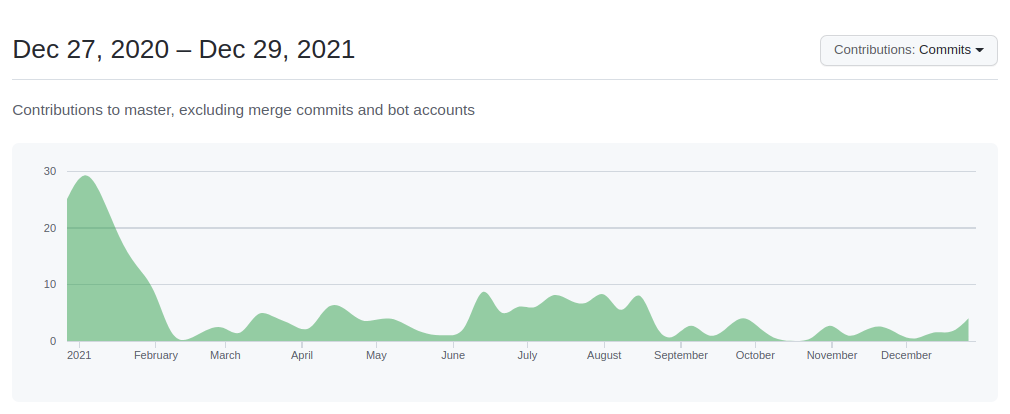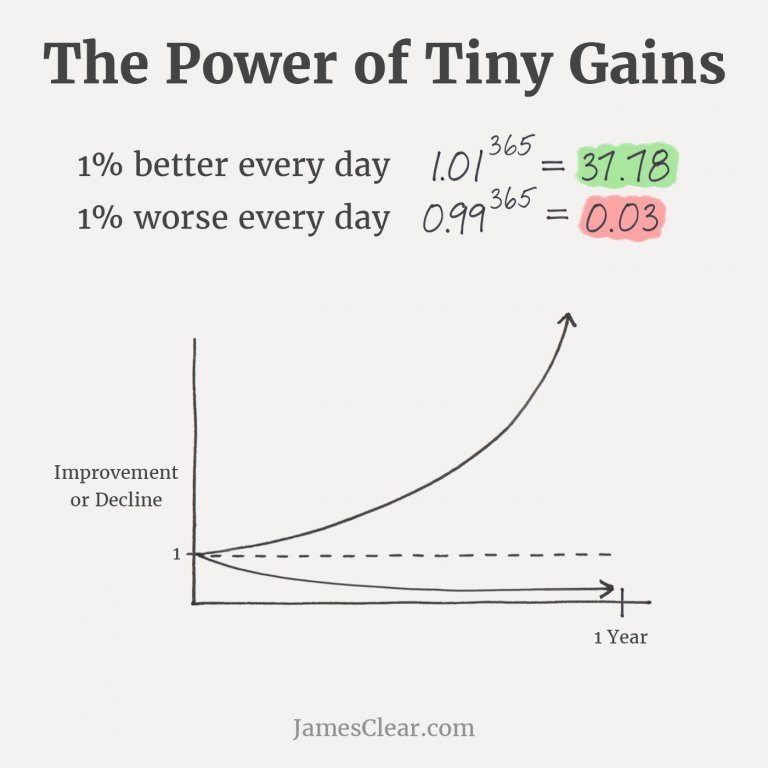Exactly one year has passed since I wrote the first commit! 🎉🎉🎉

I have reached my goal that I had set a year ago - to consistently work on a single side project for a year.

I wrote the first code for Stencil on December 28, 2020 and launched Stencil on Product Hunt in early August (probably around August 3). The development phase was planned for 3 months but it took me close to 8 months.
- Had to slow development down due to lock down in February/March as daycare was closed.
- Work can get busy at times.
The journey was definitely not as I anticipated it to be, but regardless I've learned a lot working on this project. I'll share some of my thoughts and observations throughout my one-year journey.
1. Always bet on compounding effort

One of my worries when starting the journey is to find time executing my plan. With the pandemic, lock downs, a full-time job, a 2-yo and a wife working in health care it sounds really impossible to get anything done after work.
Despite those challenges, I managed to get things done with careful planning ahead of time and spending every little spare times to work on this project. Feature-wise I think I have done quite a lot in this short one-year period.
One of our best customers mentioned at one point that they really like our editor compared to a certain service - one that is run by a multi-million dollar company. Here I am working on Stencil as a solo founder. Couldn't be more proud of this.
2. Think for yourself
There are a lot of conflicting opinions in this space. It really stems from survivorship bias element - so what works for them might not work for you and what works for you might not work for them.
Interacting and exchanging opinions with other makers certainly help but you'll need to learn how to decipher those information for you.
Since I am building Stencil in public, I am definitely vulnerable to comments and criticisms. There will be people that think you are copying their product, there will be people that think your product is complicated or too simple, and a whole lot more. It is important to think objectively and to prioritize comments from your actual users. Simply ignore the passers-by, sometimes they are just noise.
3. Find the right support community
Finding the right community is one of the best things that I've done this year. I can code fairly well but I am at loss at certain things like marketing. Having the right support community allows me to bridge some of the gap in areas that I am lacking.
Sharing thoughts and getting feedback in a safe and constructive environment really help in ensuring that the progress I made is pushing me to the right direction. I joined several communities early on and now I am mostly active on one - CodeSwaps. Certain communities sometimes require a weekly commitment which I don't have the luxury of time to spend on. I found smaller active community is much better than a larger community.
4. Is indie-hacking any better than corporate?
Over time, I observed something intriguing regarding indie-hacking space. This observation was made purely based on interactions on Twitter and some communities that I was part of.
Indie-hacking scene, despite what's being portrayed, actually have a lot of similarities with corporate world - the very thing it tries not to be. When you ponder about this, it is indeed very similar where both world have a high degree of survivorship bias element.
There are "thought leaders", those people who have passed The Great Filter and whatever being said by them are taken as words written like in the holy script. The same person who preaches MVP doesn't need X feature is the same person who will complain loudly when the product has no X feature.
Dear Startup Founders,
— SaaSy (@I_Love_SaaS) December 29, 2021
Nobody cares about you until you are successful.
Focus 100% on your dream.
Success is attractive and you're definitely are not if your MRR says otherwise. Money talks and money buys credibility in this space.
In the corporate world, connecting with someone is networking while in indie-hacking, it is building audience (read: gaming the algorithms). This is very apparent in Twitter where you'll see people obsessing over the followers count metric. Pushing artificial and generic contents are pretty normal to game the algorithms. This idea seems so foreign to me initially.
Of course there are genuine people who actually post insightful and interesting stuffs but they are harder to find.
By no mean this is to say that everything is bad/good in indie-hacking or corporate world, I just found the resemblance funny as both are always thought to be the antithesis of each other.
5. Money is the wrong motivator
If you're in solely for the money, then this might not be for you. This thing is hard, getting a job is probably a lot easier but one thing for sure it is fun seeing the thing you built getting traction.
I realized that I wasn't actually looking for more money in life - I am actually seeking freedom. This is my main motivator.
I am nowhere near sustainable yet even after four months of launching and I am working my fingers to the bone. In fact, I just reached a point where I am slightly in profit by a small margin.
This will take time. I know few founders that reached profitability very early but again I think they are more of exceptions than the norms.
What's next for Stencil?
Doubling down on what's working
Over the last two months, I have tried different channels to get the traction going. The only things that I have found working are,
- Building more contents to improve the SEO
- Interacting with the right people
- Providing a good support
This month, Stencil's website has reached fourth spot for a key search term, which is really great where few months back, it is non-existent in the search result. Despite that, I didn't see any significant growth but I am hopeful that it will pick up in the next few months once everyone is back from holidays. SEO is a long term game for Stencil's growth.
Also, I've gotten some replies on my cold DMs and will be planning to do more of that next year too. They are tedious but it's a good way to push the words around about Stencil.
This month we have a customer that has upgraded to our biggest plan, I really think it has to do with our support. I always try to listen to the feedback given by this particular customer and build the features that they need.
Improve, improvise, adapt
For the next few months I am planning to build more features to stay competitive and will also be improving the existing features so that they are easy to use for our users. Adapting to users needs are going to be crucial strategy going forward for Stencil.
Staying true to the goal
My goal for Stencil is to provide the best user experience and developer experience for the customers. There are plenty of works to do in this area especially in better documentation, guides and other user related contents.
Stencil's goal for me has always been a way to build a lifestyle business. If you're not familiar with this term, lifestyle business is essentially a business set up and run by its founders primarily with the aim of sustaining a particular level of income and no more; or to provide a foundation from which to enjoy a particular lifestyle.
This is not to say that I will sacrifice the quality of work, that has always been a priority since day one. I believe in order to deliver a good product, there must be a work life balance. Happiness is the key to build a good product. After all, product building is a marathon not a sprint. Everything good will take time.
To maintain the pace of work, I've decided to onboard my brother who will help with the development progress. I'm so excited on what's to come next year, I hope it will be good and I will put the effort to make it good.
Phew, that was a very long read. If you read till the end, thank you and I hope next year will be a treat to you too.
Till then, I'll talk to you soon.
Good luck and have fun! ✌️
